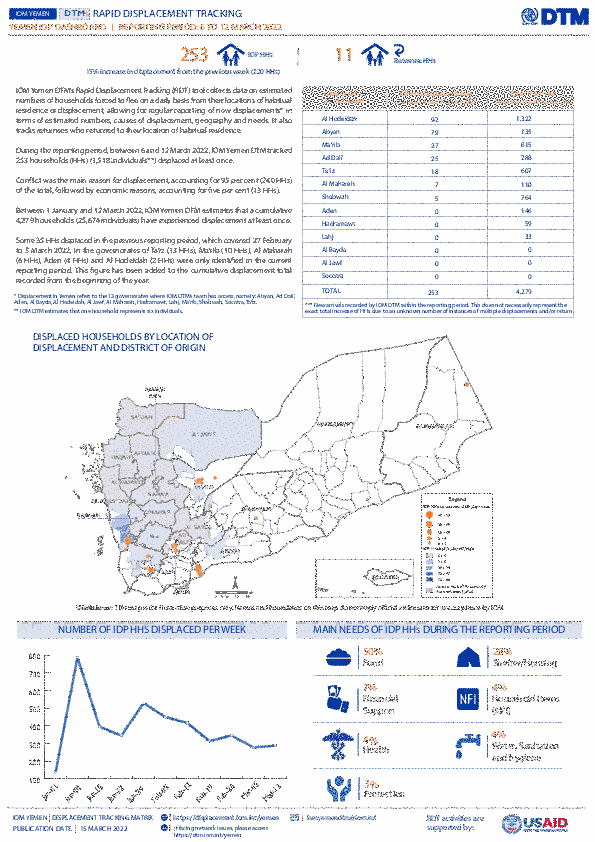-
Countries
-
Data and Analysis
-
Special Focus
-
Crisis Responses
Yemen — Rapid Displacement Tracking Update (06 March - 12 March 2022)

Contact
DTM Yemen, iomyemendtm@iom.int
Language
English
Location
Yemen
Period Covered
Mar 06 2022
Mar 12 2022
Activity
- Rapid Emergency Registration
- Mobility Tracking
IOM Yemen DTM’s Rapid Displacement Tracking (RDT) tool collects data on estimated numbers of households forced to flee on a daily basis from their locations of origin or displacement, allowing for regular reporting of new displacements in terms of estimated numbers, geography, and needs. It also tracks Returnees who returned to their location of origin.
From 01 January 2022 to 12 March 2022, IOM Yemen DTM estimates that 4,279 households (HH) (25,674 Individuals) have experienced displacement at least once.
Since the beginning of 2022, DTM also identified 011 displaced households who left their locations of displacement and either moved back to their place of origin or another location.
Between 06 and 12 March 2022, IOM Yemen DTM tracked 253 households (1,518 individuals) displaced at least once. The majority of people moved into/within the following governorates and districts:
- Al Hodeidah (92 HH) – Hays (91 HH), Al Khukhah (1 HH) districts. Most displacements in the governorate were internal.
- Abyan (79 HH) – Khanfar (65 HH), Zinjibar (14 HH) districts. Most displacements in the governorate originated from Al Hodeidah.
- Marib (27 HH) – Marib City (16 HH), Marib (11 HH) districts. Most displacements in the governorate originated from Ibb and Al Hodeidah.
The majority of people moved from the following governorates and districts
- Al Hodeidah (164 HH) – Hays (98 HH), Zabid (20 HH), Al Jarrahi (18 HH) districts.
- Taiz (22 HH) – Jabal Habashi (4 HH), Maqbanah (4 HH), Hayfan (3 HH) districts.
- Ad Dali (17 HH) – Qatabah (17 HH) district.
